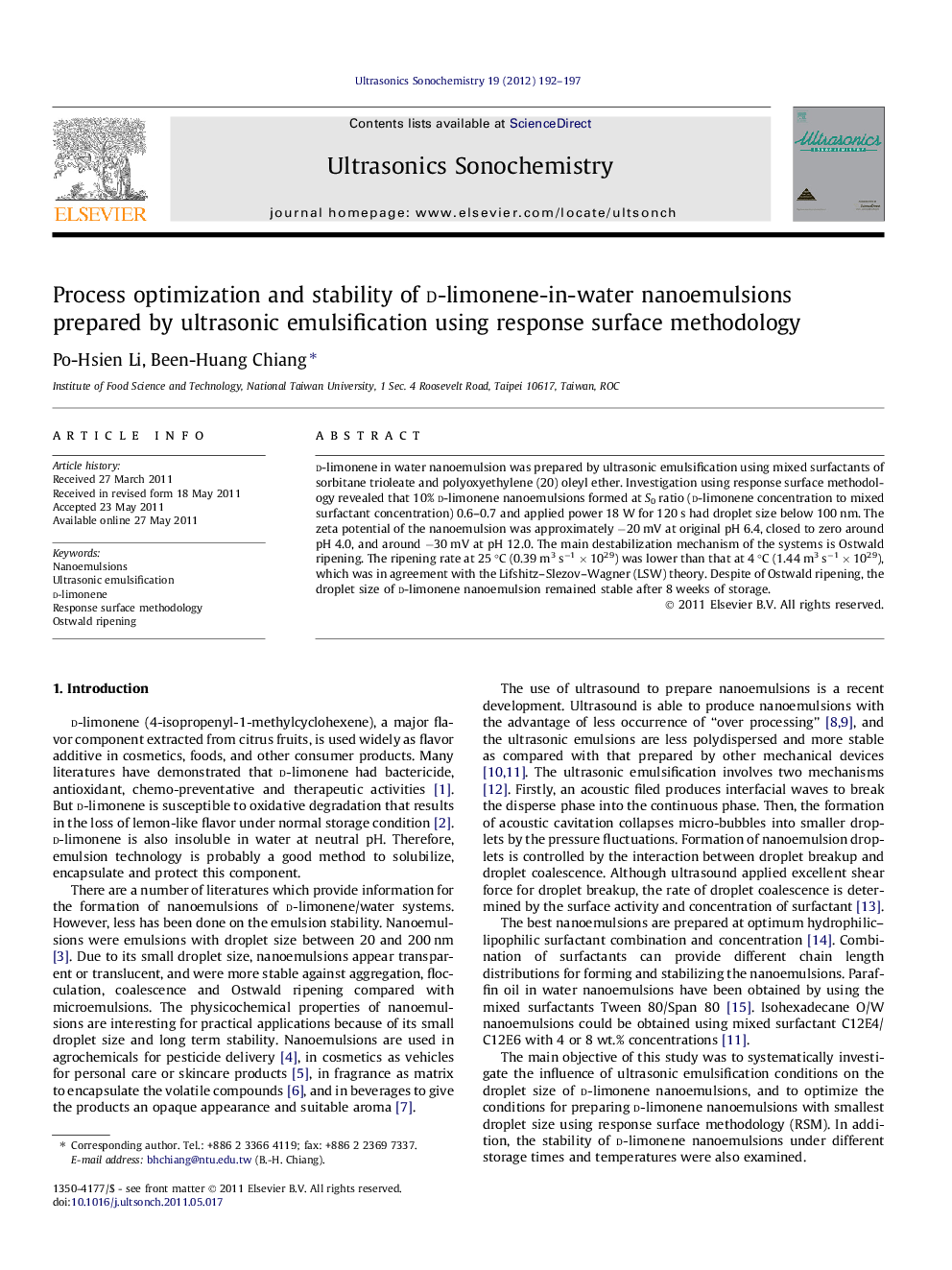| کد مقاله | کد نشریه | سال انتشار | مقاله انگلیسی | نسخه تمام متن |
|---|---|---|---|---|
| 1270178 | 972479 | 2012 | 6 صفحه PDF | دانلود رایگان |

d-limonene in water nanoemulsion was prepared by ultrasonic emulsification using mixed surfactants of sorbitane trioleate and polyoxyethylene (20) oleyl ether. Investigation using response surface methodology revealed that 10% d-limonene nanoemulsions formed at S0 ratio (d-limonene concentration to mixed surfactant concentration) 0.6–0.7 and applied power 18 W for 120 s had droplet size below 100 nm. The zeta potential of the nanoemulsion was approximately −20 mV at original pH 6.4, closed to zero around pH 4.0, and around −30 mV at pH 12.0. The main destabilization mechanism of the systems is Ostwald ripening. The ripening rate at 25 °C (0.39 m3 s−1 × 1029) was lower than that at 4 °C (1.44 m3 s−1 × 1029), which was in agreement with the Lifshitz–Slezov–Wagner (LSW) theory. Despite of Ostwald ripening, the droplet size of d-limonene nanoemulsion remained stable after 8 weeks of storage.
► d-limonene in water nanoemulsion was prepared by ultrasonic emulsification.
► Sorbitane trioleate and polyoxyethylene (20) oleyl ether were used.
► Emulsification was conducted at So ratio 0.6–0.7 and applied power 18 W for 120 s.
► The emulsion had droplet size below 100 nm.
► d-limonene nanoemulsions were stable against Ostwald ripening at room temperature.
Journal: Ultrasonics Sonochemistry - Volume 19, Issue 1, January 2012, Pages 192–197